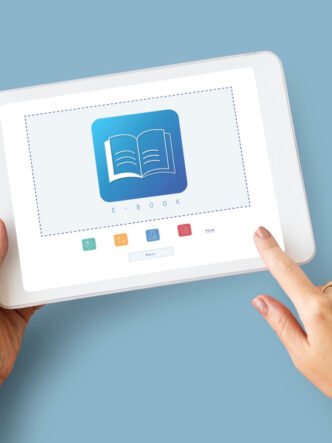Many individuals have a problem with retaining knowledge and will forget about half of all new information they learn within a day. Forgetting information over time is inevitable. Many corporate trainers and online educators face this challenge. They have to enable video knowledge retention so learners can apply what they learn. Using video-based education can enhance knowledge retention.

Why video works
- Using videos creates more interactive learning experiences. They combine both visual and auditory cues, which help to ensure that information goes into long-term memory.
- Videos offer learners the chance to learn at a pace that suits them. When they understand concepts and ideas, they tend to retain this knowledge. Videos allow them to go back and rewatch content until they fully understand it.
- The use of storytelling in videos creates an emotional connection with viewers. When videos evoke emotions, they strengthen knowledge retention because they activate the brain regions involved in relatable real-life experiences. Stories also provide a structured way to organize information, which makes it easier to encode and recall.
- Educators can customize videos to suit different learning needs and preferences. This can increase the motivation to learn, which results in better retention.
- Practical application of knowledge is one of the best learning retention strategies. Videos that use real-world scenarios encourage learners to apply what they learn.
Using the Cincopa video hosting platform allows online educators, corporate trainers and other educational professionals to host, store, organize, and deliver e-learning videos. Learners are able to navigate easily and use search features to find the videos they need. A video chaptering feature allows them to go to a specific chapter in a video.
Scientific support for the use of videos to enhance knowledge retention
Dual coding
Dual coding theory suggests that the brain processes visual and verbal information separately. They experience both types of information at the same time when watching videos. This can strengthen their memories.
When videos combine visual aids such as animations with verbal explanations, learners are able to retain even complex concepts.
Learners often experience cognitive overload, but using dual coding helps to deepen comprehension. A way to include dual coding in a video is to use text and visuals in the video script. Another way is to use interactive quizzes. Quizzes can come in various different formats and many educators make use of multiple-choice questions.
Spaced repetition
Studies show that new information is more memorable when learners review it at spaced intervals. This works much better instead of trying to learn it all at once. It reinforces memories at the point where they are beginning to fade. This can result in long-term retention and prevents the need for cramming just before assessments.
Every time learners recall the information from long-term memory, it strengthens the neural connections associated with the information. This means that over time the information becomes easier to retrieve and may eventually become automatic. Without having to review or recall information, it is easy to forget.
German psychologist Hermann Ebbinghaus introduced the ‘forgetting curve’ when conducting memory experiments. He found that after learning new information, memory decays quickly. People forget most new information unless it is reinforced.
Researchers found that learners who spread reviewing of information over several sessions were able to perform better on an immediate test and one four weeks later than those who revised the information in a single session.
Active recall presents a level of difficulty that can strengthen the neural pathways to long-term memory. When educators space out opportunities for active recall, it makes learning more effective.
Corporate trainers can break down long training sessions for remote and hybrid employee training into shorter sessions with spaced intervals for better recall.

Tips to enhance retention through video
1. Recap segments
Recap segments in videos help to refresh the memories of viewers. It can consolidate information for them before they move on to another video chapter or module. Short recaps throughout a video can reinforce the key takeaways. They can also help to bridge transitions between chapters to ensure a smooth flow of information. Using graphics, text, or overlays can make recaps more memorable. Recaps should be brief and to the point and always focus on the main points.
2. Interactive checkpoints
Checkpoints throughout a video can help to encourage interaction. An example of this is introducing quizzes at various significant points. Learners can reinforce prior learning without taking up too much time. Annotations can offer learners links to additional information while they watch a video. Educators can customize when checkpoints appear and what they look like.
3. Subtitles and captions
Subtitles and transcripts provide viewers with text while watching visuals. This enhances understanding and retention, especially for those who speak English as a second language. They also offer hearing-impaired viewers a way to understand.
4. Real-world scenarios
Using real-world scenarios in corporate training is one of the best ways to enable learners to retain and apply their knowledge. Real-world scenarios require them to make choices and they can see the consequences of their decisions. They can develop and refine their skills in a safe way to build up their confidence. This approach works well for various training needs, especially customer service and compliance training.
5. Microlearning
Microlearning videos are learner-centric and short in duration. They break content down into small units that are easy to digest. Each unit focuses on a particular topic and imparts a short burst of information that is easier to retain and apply.
6. Gamification
Using game-based elements such as points and badges can help to engage learners. These elements take advantage of the human tendency to respond to challenges and rewards. It makes learning more immersive and enjoyable, which results in better retention.
The Cincopa video hosting platform enables educators to embed checkpoints, track replays, and analyze video impact. This helps teams to design video content that drives long-term knowledge retention.
7. Social sharing and interaction
Social interaction and sharing can enhance understanding and knowledge retention. Ways to share may include discussion groups and video messaging. Sharing knowledge with others consolidates learning. Learners can use their strengths to help others and others can help them with their weaknesses.
When they understand different perspectives, it can help them to develop their problem-solving skills. Connecting new concepts to existing knowledge through collaboration can help make it more memorable and enhance application in real-world scenarios.
Use cases
Onboarding
E-learning video benefits for onboarding include being able to use storytelling. This provides a great way to give new hires insights into company culture and what it’s like to work for a company. Behind-the-scenes onboarding videos can help new hires to understand more about daily routines and company procedures.
Compliance
Compliance videos work well when they incorporate scenarios. Compliance information can be boring and hard to retain. Scenarios engage employees in role-playing, which gives them hands-on experience. A fire safety training video using animation and relatable characters is more memorable.
Continuing education
Access to live streaming enables educators to ask and answer questions and get feedback from learners. They can then save a live stream to a video library and make it available to learners as video-on-demand. This enables both synchronous and asynchronous learning, which helps to increase retention. Easy access to a video library that contains videos on many topics can encourage ongoing learning.
Conclusion: Use video as a tool for lasting impact
Corporate trainers and other professionals not only need to create quality videos but also ensure video knowledge retention and application. Using videos for knowledge retention works for scientific reasons like dual coding and spaced repetition. Educators can use the above tips and use cases to enhance video knowledge retention. Sign up for a free trial on Cincopa’s home page and try out its solutions for video-based education that enhances memory and learning.









